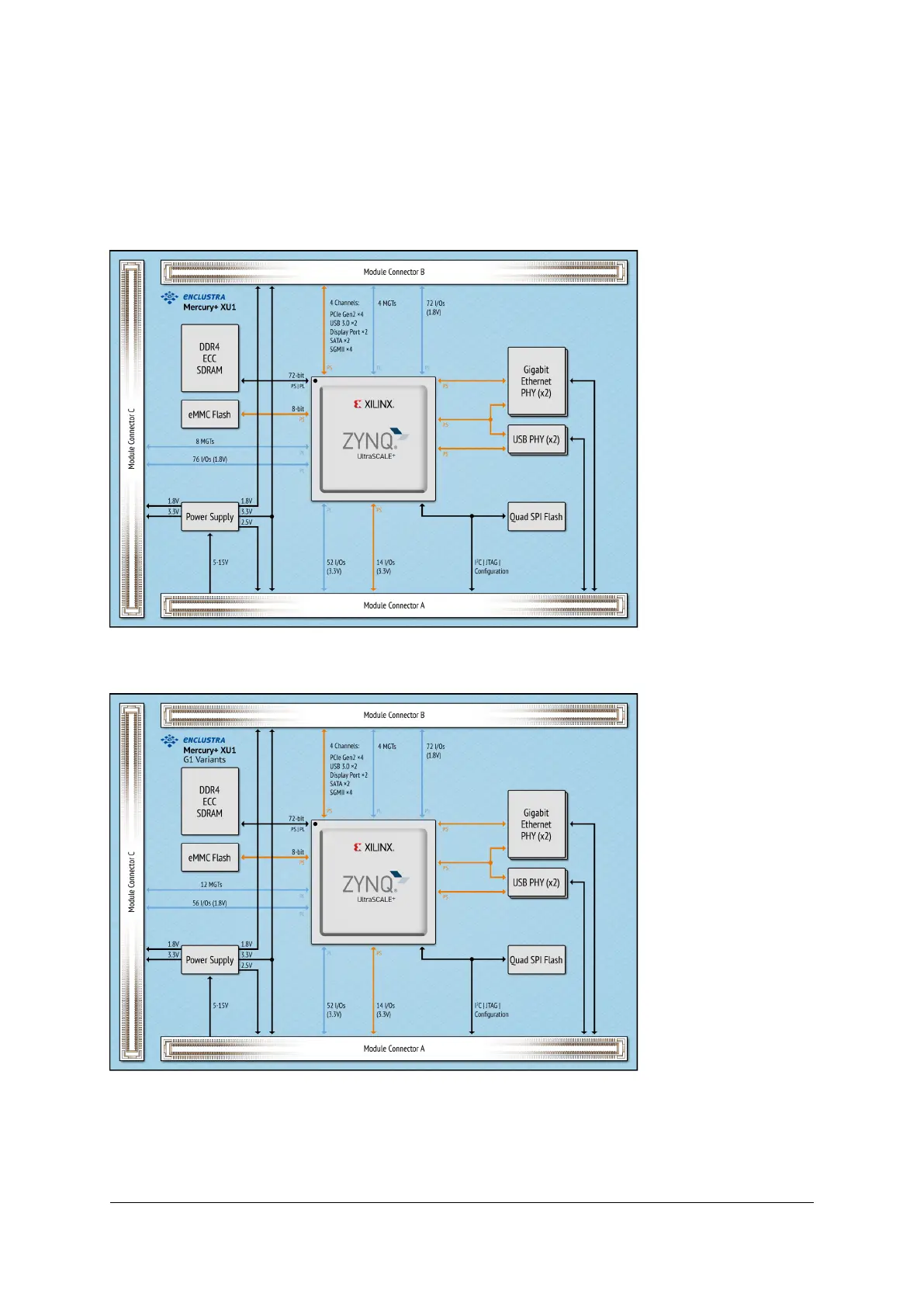2 Module Description
2.1 Block Diagram
Figure 1: Hardware Block Diagram
Figure 2: Hardware Block Diagram - G1 Variants
The main component of the Mercury+ XU1 SoC module is the Xilinx Zynq Ultrascale+ MPSoC device. Most
of its I/O pins are connected to the Mercury+ module connector, making up to 214 regular user I/Os avail-
able to the user. Further, up to twenty MGT pairs are available on the module connector, making possible the
D-0000-428-001 10 / 66 Version 13, 15.08.2019
